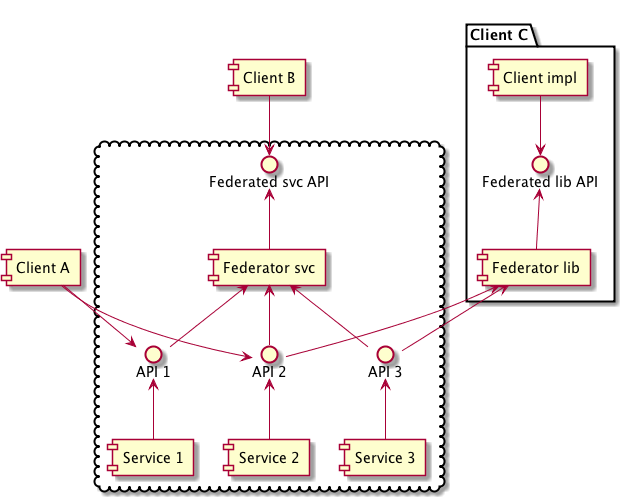-
Notifications
You must be signed in to change notification settings - Fork 4
Home
Epigraph is a framework for building and consuming services. It's main philosophy is that services should be simple, decoupled from each other, usually describing only single functional domain. Service APIs should be minimal yet flexible, with clients having a lot of run-time flexibility over describing what exactly an operation should do. Services should be glued together using federation layer which connects them into one big graph of data.
Framework has a number features designed to help with these goals:
- Expressive domain model language. It supports semantic types, multiple inheritance, metadata and custom attributes
- Variable types as a way to better support versioning and data federation. Changing field type is no longer a backward-incompatible change
- Projections as a structured way of defining both implementation and invocation contracts for operations
- Federation layer automatically providing rich graph APIs on top of small domain-specific services
And of course a usual set of features:
- Language agnostic
- Pluggable wire protocols
- full CRUD support plus custom actions
- Bulk operations with partial failures support
- REST-like HTTP interface
- Asynchronous client bindings
Following sections give a high level picture of system design. TODO: need more details here.
Typical deployment consists of a number of domain-specific services deployed in a cloud, each providing it's own API. On top of them there is a Federator service which stitches individual services together to provide graph-like API for reads.

Clients can consume services directly, like Client A, or they can talk to the federation layer, like Client B. They can also chose to use federator as a library and configure it to only see a selected subset of services, like Client C does.
Key point here is that services don't have to talk to each other in order to provide rich APIs, they focus on their own business and provide only minimal information about external relations in the form of IDs, URNs or any other link format.
Clients such as UI can get access to the whole graph of objects provided by all of the services via federation layer, which knows how to traverse the links between different kinds of objects. This knowledge is based on the individual services API declarations.
Service development consists of the following steps:
- Authoring service schema. Schema describes domain model objects, relationships between them and service APIs
- Compiling schema and generating data container classes and service implementation stubs
- Implementing the stubs

Clients generate data containers and client bindings from schema.
With federation in the picture everything stays the same, federator merely looks like another service which adds deep read operations to another services.